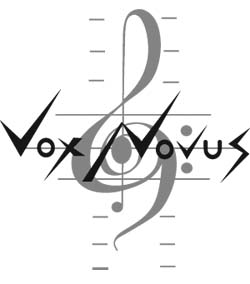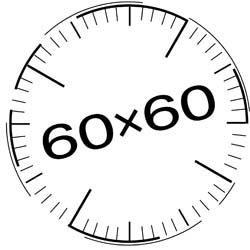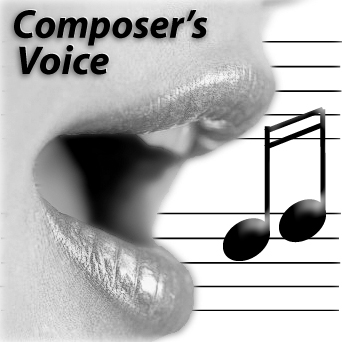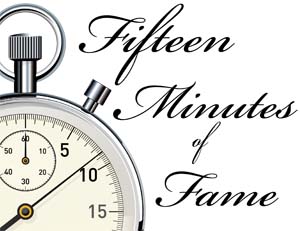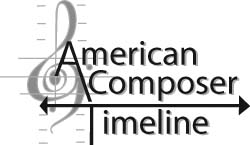
| <<< | December 8, 2012 | >>> |
The Public Decides:
|
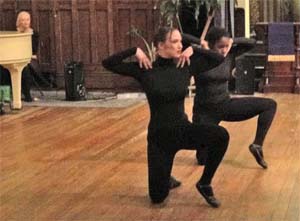
|
|
While sipping margaritas with a thickly salted rim and scooping up silky guacamole with tortilla chips the size of compact discs, my friend Rob Voisey and I discussed the role music plays in dance. Specifically, how does the presence of music affect movement? I thought the influence was significant, but was not sure. Numerous choreographers see music as something to be added at the last minute along with costumes and lighting. It is not unusual for choreographers to create a full work without music, due to a dearth of time, money, or desire. Sometimes, choreographers abandon the idea of music in favor of an aural soundscape that chirps and buzzes in the background. Music becomes something you move through, not move to. This stands in contrast to the standard classroom experience, which usually features tonal, metered music. While not all dance teachers craft their phrases to coincide with musical counts, a distinct feeling of dancing to the music pervades. Like many dancers I know, I came to dancing through a love of music. Using my body to reflect music seemed to be as close as one could get to heaven. The philosophical conversation led to the Composer’s Voice Dance Collaboration. Creating not just the movement, but also the music that accompanied it, triggered a desire to continue my investigation into the relationship between music and dance. While chatting with Rob about the possibility of curating a Composer's Voice concert, I brought up the importance of the audience. Most art is created in a vacuum and then presented to the public in a fully realized form. But what if the audience hates it? Wouldn’t it be helpful to get their opinion before spending months working on something that is ultimately rejected, or worse – ignored? I know some artists have a knee jerk reaction to caring less what the audience thinks. I've heard some comment, “what do they know?” But I care. I want people to see my work. I want some to feel enriched by my viewpoint. I want the audience to be a vocal part of my process. Maybe this is selfish on my part. Perhaps it makes me less of an artist, but I don't care. |
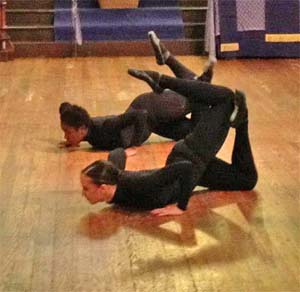
|
|
Thus, the Composer's Voice Dance Collaboration: the Public Decides was born with the intent to investigate the relationship between music, movement, and the audience. Rob and I hashed out a feasible plan. I would release a call for unfinished scores, select five, and premiere the same choreography to the five compositions, and let the audience vote on their favorite. To encourage a wide range of opinions, we would place videos online for voting. The composition that garnered the most votes would be awarded a prize. The composer would finish their piece, and I would complete the choreography. The final product would premiere as part of Movement Research’s Open Performance Series. It proved to be a compelling process choreographing without music. Sometimes I felt empowered creating movement without aural parameters. Often, I felt lost. Without musical cues available to provide emotional heft, I had to find a way for the movement to convey both form and function. This is difficult when you are a newish choreographer. An unseasoned movement-maker like me can use music to round out choreography and provide much needed context and structure. During our rehearsals, which spanned six short weeks, I constructed the movement, spacing, and dynamics through personal improvisation, and left the rest to the dancers' intuition, knowing once the votes were in and the winner announced, I could go back and rework the choreography to fit the final composition. |
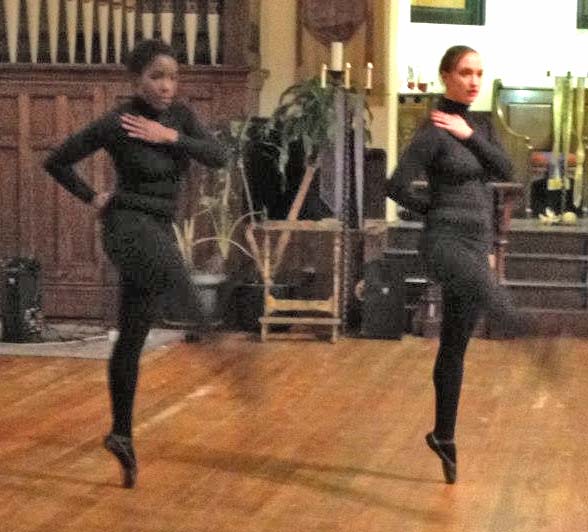
|
|
My worry was watching the same choreography five times in a row would be irritatingly fatiguing for the audience. This proved to be unfounded; the performance was a lovely show for all involved. The audience was enthusiastic. They took their responsibilities seriously, voting with care and providing thoughtful feedback. I found their gracious participation touching and humbling. They know so much. Composer's Voice Dance Collaboration continues. Videos are online for voting and commenting. You can read why the five semifinalist compositions were selected. The show indicated that people have definite opinions about their favorites. It excites me to have people feel strongly about their choice. Right now, I am eager to get back into the studio at the conclusion of the voting. The piece-which currently exists as a half-finished, semi-formed thought-will solidify based on the music you chose. I cannot wait to see how it all turns out. Please vote if you haven’t yet! http://www.voxnovus.com/composersvoice/program/12-11-18.htm Thank you for being part of my process. And many, many thanks to Rob Voisey and Douglas DaSilva for allowing me the time and space to play. |
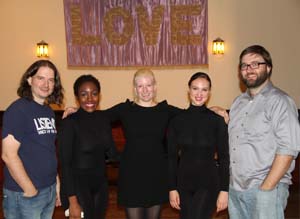
|
To Do or Not To Do
Visit the American Composer Timeline. If you are an American composer and not on the timeline, submit your name birth date and web link.
AND while you are at it, maybe you should add your name to Wikipedia as well: |
Calendar |
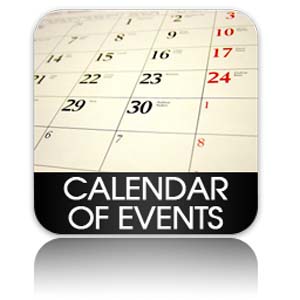
|
Announcements |
Two Performances Sunday!
|
60x60 Dance (2011) Athena Mix Mix at Central Michigan University60x60 Dance (2011) At 2:00 pm (central time)Central Michigan University Moore Hall, in the Kiva Mt. Pleasant, Michigan 48859
For the first time ever, Central Michigan University will host 60x60 Dance performance on Sunday, December 9th at 2:00 p.m. in the Kiva in Moore Hall.
Composers in the 60x60 (2011) Athena Mix inlcude:
|
My Dad's Violin
Sunday December9th, 2012 1:00 PM |
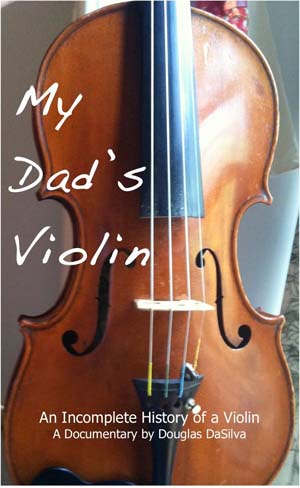
|
|
Many years ago (1940’s) in North-Eastern Brazil, my Uncle Zé, gave my father a generous gift. My father had mentioned that he would love to study violin; but being a student in the seminary he had no money to buy one. Tio Zé gave my Dad a violin (Breton, crafted in France, circa 1820). How this violin ended up in rural Brasil in the 1940’s and how my uncle had the means to purchase it is a mystery that I hope to someday unravel. My father brought this violin with him to America where he briefly studied at Peabody Conservatory and kept it with him through jobs, marriage and children. A few years ago my father put me in charge of this family heirloom.
|
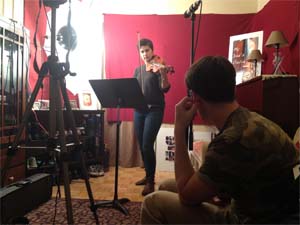
|
|
This sparked the idea that I could make a more significant DVD by filming a whole bunch of violinist playing this violin. So did: I recorded some great violinists performing on My Dad's Violin: Lynn Bechtold; Greg Doruzel ; Ari Isaacman-Beck; Shem Guibbory; Josh Henderson; Hayne Kim; Conway Kuo; Bin Lu; Jessie Montgomery; Kurt Nikkanen; Paul Peabody; Suzie Perelman; Daniel Reed; Michael Roth; Andrew Schaw ; Curtis Stewart; Stefanie Taylor; and Shelby Yamin .
|
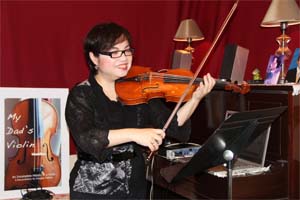
|
|
Many people were touched by this project and enthusiastically encouraged me to make a “proper” documentary.
|
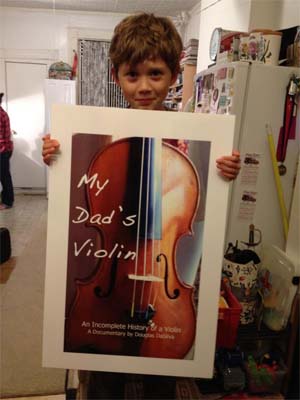
|
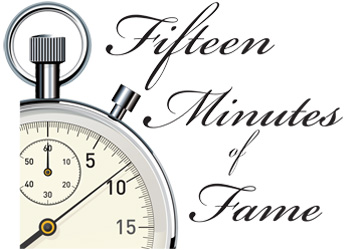
Fifteen Minutes of Fame
|
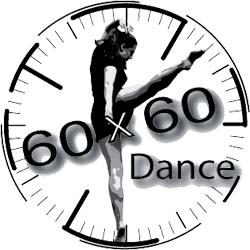
60x60-Call for Dancers
|
